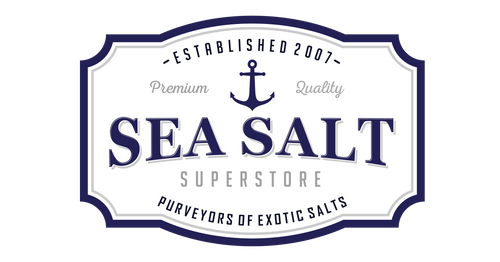Have you ever wondered how that humble seasoning on your kitchen counter made its way from vast oceans and underground mines to your table? Welcome to the story of salt production, where nature's elements and human ingenuity intertwine to provide us with a versatile mineral that has played an essential role throughout history. From enhancing the flavors of our culinary creations to preserving food and even clearing icy roads in winter, salt has been an integral part of our lives for centuries.
Below, we'll delve into the ancient art of sea salt extraction, venture deep underground to uncover the secrets of rock salt mining, and discover the delicate balance of science and nature in evaporating brine solutions.

SOLAR EVAPORATION
Solar evaporation is one of the oldest, most natural, and most widely used methods of salt production in areas with abundant sunlight and warmer climates. Dating back to at least the ancient Egyptians, who collected seawater in shallow basins along the Nile Delta, early civilizations laid the foundation for the sea salt evaporation techniques that are still employed today.
To produce sea salt through solar evaporation, seawater is collected in large shallow ponds or basins called salt pans. This collection may happen along the coasts of salt water bodies of water such as oceans or saltwater lakes.
The collected water is spread out in the salt pans and exposed to sunlight. The heat from the sun causes the water to evaporate, leaving behind salt crystals. The process of evaporation is aided by the wind, which helps to increase the rate of water evaporation. This process may take several weeks to months, depending on the climate, temperature, and humidity.
Once the salt crystals have formed, they might be washed with clean water, dried, refined, ground, or sorted, depending on the grain size desired. Different locations around the world can product very varied sea salt. Sea salt is also terrific for flavoring, with spices, garlic and herbs, or even making smoked salts.

ROCK SALT MINING
Beneath the surface of the earth, sometimes thousands of feet down, lie underground salt deposits, formed by the natural evaporation of ancient saltwater oceans and lakes. Rock salt mining is the process of responsibly extracting salt from these salt deposits. This method is, of course, how we find all of that gorgeous pink Himalayan salt that is so popular. Humans have been mining salt from underground oceans and lakes since at least the Neolithic period in 6000 B.C. in China.
Today, the mining process begins by drilling a well or shaft down to the salt deposit. Once the salt deposit is reached, miners use explosives to blast the salt into large pieces that can be transported to the surface. Miners take great care to ensure that the mining process is minimally impactful on the land above it, through land restoration, water preservation, wildlife and habitat protection, and pollution mitigation.
After the salt is extracted, it is crushed into smaller pieces and transported to a processing facility. There, the salt is washed, dried, and screened to remove impurities and produce salt of different sizes and grades.
Rock salt mining has been around for thousands of years, and it's an important industry that provides the world with a vital resource. Rock salt is used for everything from de-icing roads in the winter to preserving food and flavoring our meals.

VACUUM EVAPORATION
A specialized type of evaporation, this process involves heating a solution of water with a high salt concentration, or brine, in a vacuum-sealed container, which causes the water to evaporate at a lower temperature than it would under normal atmospheric conditions. This control over the evaporation process helps to produce a high-quality salt product – the brine solution is heated just enough to force the water to evaporate into steam, which is then removed from the container using a vacuum pump.
As the water evaporates, the salt concentration in the remaining brine solution increases, causing salt crystals to form. This controlled evaporation results in a very high-quality salt grain with a consistent size and low moisture content – because the moisture was evaporated out. Because of these characteristics, this type of salt is a popular choice for use in the food industry, where purity and consistency are important factors. Additionally, the vacuum evaporation process is energy-efficient and produces less waste than other salt production methods, making it a more environmentally friendly option.
NEW TECHNIQUES
The salt industry stands at the intersection of tradition and innovation, and continues to evolve, adopting sustainable practices, embracing technology, and striving for environmental stewardship. From land restoration and water management to minimizing waste and emissions, the industry's commitment to responsible practices ensures that we can savor the benefits of salt without compromising our planet's well-being.




